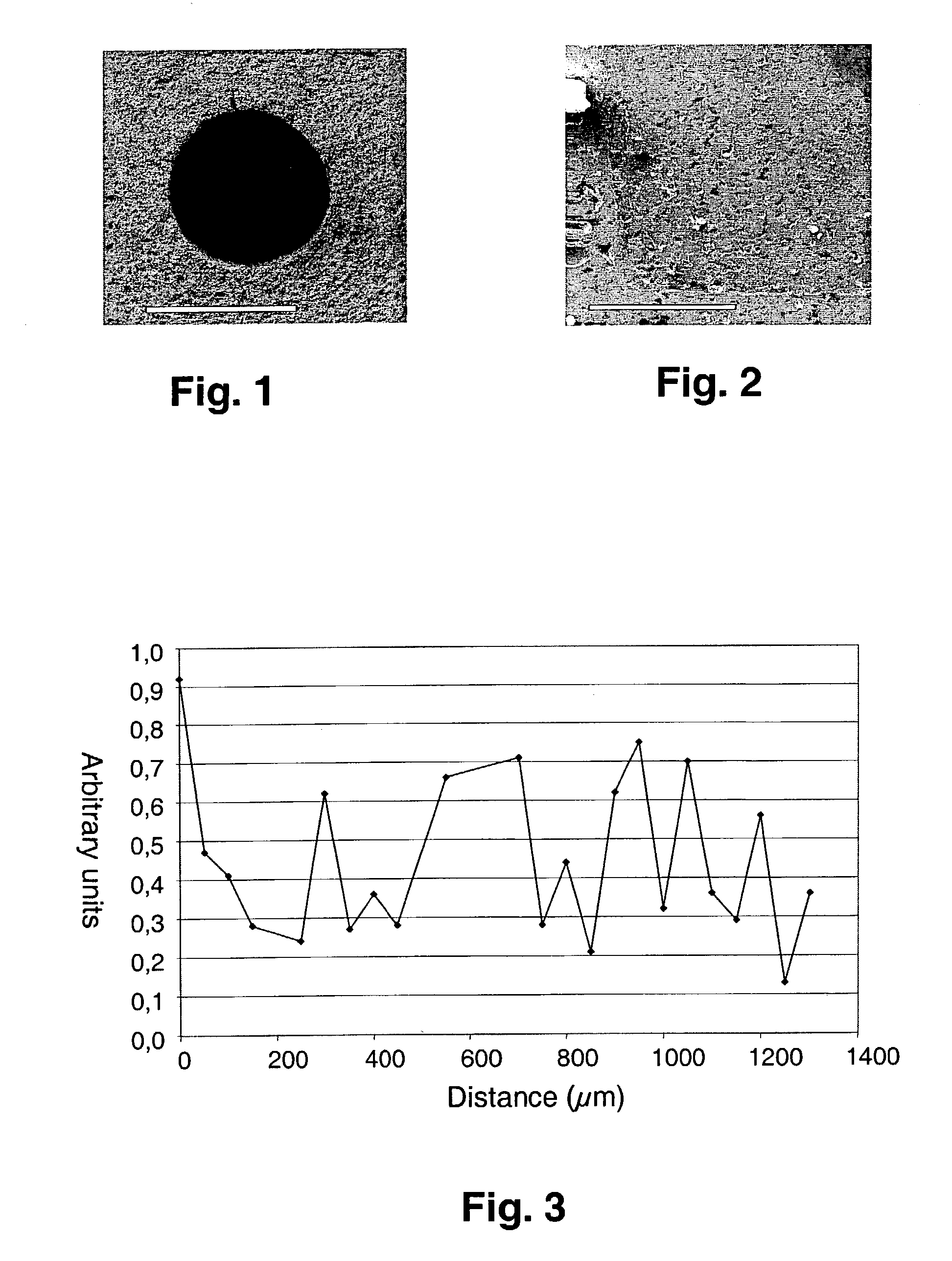Structured catalysts incorporating thick washcoats and method
- Summary
- Abstract
- Description
- Claims
- Application Information
AI Technical Summary
Benefits of technology
Problems solved by technology
Method used
Image
Examples
example 1
Structured Catalyst Support with Thick Sol-Bound Washcoat
[0038]A thick durable alumina washcoat of high porosity is provided on the interior channel walls of a ceramic honeycomb monolith catalyst support of cordierite composition. The ceramic honeycomb selected for washcoating is a square-celled cordierite honeycomb having a cross-sectional cell density of about 7 cells / cm2 and a channel wall thickness of about 0.6 mm.
[0039]To provide an alumina washcoating on the interior channel walls of this honeycomb, a quantity of aluminum isopropoxide (99% wt.) is first hydrolyzed by mixing with hot water and the mixture then peptized by the addition of nitric acid to achieve a pH of 4 to produce an alumina sol binder solution containing about 1 mole of alumina per liter of sol.
[0040]A quantity of a high-surface-area gamma alumina powder (surface area of about 200 m2 / g) is next added to this alumina sol to produce a coating slurry for a honeycomb washcoat. A weight addition of about 0.35 parts...
example 2
Pt Catalyst on Thick Alumina Washcoat
[0044]To prepare a structured platinum catalyst, a catalyst support in the form of an alumina-washcoated cordierite honeycomb produced in general accordance with the procedure described in Example 1 above is first provided. For this catalyst, a catalyst preparation is made by dissolving H2PtCl6 in 80 ml water to form an aqueous solution containing about 0.4% platinum by weight.
[0045]The washcoated catalyst support is catalyzed by immersion into the catalyst solution thus provided, the result being a complete platinum impregnation of the porous alumina washcoat throughout its thickness. Following the impregnation of the washcoat with the catalyst solution, the solution-treated support is dried and then heated in air to 400° C. to vaporize the water and convert the platinum compound to platinum. It is thereafter cooled and examined.
[0046]Electron microprobe examination of the catalyst-impregnated washcoat thus prepared shows a good distribution of ...
example 3
Alumina-Supported Pt Catalyst in Thick Washcoat Support
[0049]An alternative method of making a structured catalyst with a thick washcoat involves uniformly impregnating a powdered oxide washcoat filler material with a catalyst prior to combining it with a selected sol binder solution. To provide a catalyzed alumina washcoat in accordance with this method the procedure of Example 1 is repeated, except that the gamma alumina powder introduced into the washcoating slurry is a powder that has first been catalyzed with platinum before being combined with the alumina binder sol.
[0050]A catalyzed alumina powder suitable for this purpose is prepared by treating a quantity of high-surface-area gamma alumina powder (surface area of about 200 m2 / g) with a H2PtCl6 catalyst solution prepared as reported in Example 3 above. The alumina powder is added to this solution with mixing, and the resulting mixture is then dried by heating in air to 400° C.
[0051]The catalyzed alumina thus prepared is adde...
PUM
| Property | Measurement | Unit |
|---|---|---|
| Length | aaaaa | aaaaa |
| Thickness | aaaaa | aaaaa |
| Percent by volume | aaaaa | aaaaa |
Abstract
Description
Claims
Application Information
 Login to view more
Login to view more - R&D Engineer
- R&D Manager
- IP Professional
- Industry Leading Data Capabilities
- Powerful AI technology
- Patent DNA Extraction
Browse by: Latest US Patents, China's latest patents, Technical Efficacy Thesaurus, Application Domain, Technology Topic.
© 2024 PatSnap. All rights reserved.Legal|Privacy policy|Modern Slavery Act Transparency Statement|Sitemap

